Imagine looking up at the night sky, filled with countless stars twinkling in the darkness. As humans, we have been captivated by these celestial wonders for thousands of years, seeking to understand their patterns and meanings. One of the most intriguing ways we have navigated the vastness of the heavens is through the Zodiac Wheel. This ancient concept maps constellations and their zodiacal positions, allowing us to interpret celestial phenomena and delve into the realm of astrology. Join us on a journey as we explore the rich history of the Zodiac Wheel, unravel its symbolic significance, and uncover the mystery of the Ophiuchus constellation. Whether you’re a stargazer or simply curious about the wonders of the cosmos, this article will take you on a captivating exploration of the fascinating world of the Zodiac Wheel.
Contents
- The History of the Zodiac Wheel
- The Zodiac Wheel and Astrology
- The Constellations of the Zodiac Wheel
- Mapping the Zodiacal Positions
- The Zodiac Wheel Today
- The Ophiuchus Enigma
- Conclusion
-
Frequently Asked Questions
- What is the significance of the Zodiac Wheel?
- How old is the concept of the Zodiac Wheel?
- What do the zodiac symbols represent?
- Can the Zodiac Wheel be used for predicting the future?
- How are zodiacal positions interpreted in astrology?
- What are some mapping techniques used throughout history?
- What tools are used for mapping the Zodiac Wheel today?
- What does the Ophiuchus constellation represent?
- How has the introduction of Ophiuchus impacted the Zodiac Wheel?
- What is zodiac sign compatibility?
- References
-
Frequently Asked Questions
- What is the significance of the Zodiac Wheel?
- How did the Zodiac Wheel come into existence?
- How has the Zodiac Wheel evolved over time?
- What do the zodiac symbols represent?
- How do astrologers interpret zodiacal positions?
- What techniques were used to map the Zodiac Wheel throughout history?
- What tools are used today for mapping Zodiacal positions?
- How is the Zodiac Wheel used in contemporary society?
- What is the controversy surrounding the Ophiuchus constellation?
- What impact does the Ophiuchus controversy have on the Zodiac Wheel?
- References
- Read More
The History of the Zodiac Wheel
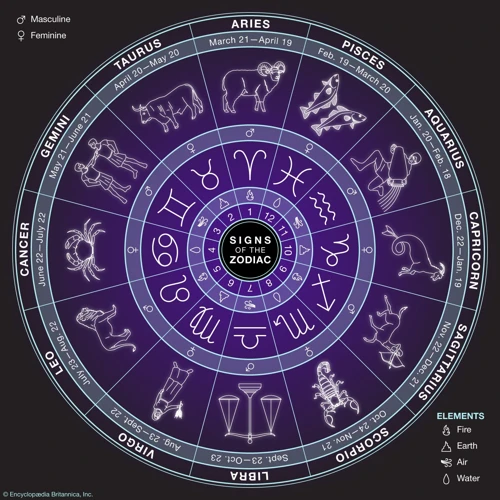
The history of the Zodiac Wheel is a captivating journey that dates back to ancient civilizations. Ancient Origins: The concept of the Zodiac can be traced back to Mesopotamia, where early astronomers noticed the pattern of constellations along the ecliptic – the apparent path of the sun around the Earth. This paved the way for the development of the zodiacal system, which was later adopted by the ancient Egyptians and Greeks. Evolution over Time: Over the centuries, various cultures contributed to the evolution of the Zodiac Wheel. The Babylonians divided the ecliptic into twelve equal parts, each named after a prominent constellation. The Greeks associated each constellation with a specific deity or mythological figure, giving rise to the zodiac symbols we know today. The Romans further refined the zodiacal system, assigning personality traits and characteristics to each sign. The history of the Zodiac Wheel is a testament to humanity’s fascination with the stars and their influence on our lives.
Ancient Origins
The ancient origins of the Zodiac Wheel can be traced back to the early civilizations of Mesopotamia, specifically the Babylonians. These early astronomers observed the patterns of constellations along the ecliptic, the path the sun appeared to take across the sky throughout the year. They noticed that the sun’s position against these constellations was not constant, but rather shifted gradually over time. In order to make sense of this celestial phenomenon, the Babylonians divided the ecliptic into twelve equal parts, each named after a prominent constellation that fell within its boundaries. These twelve segments became known as the zodiacal signs. The Babylonians believed that the positions of the stars and planets had a direct influence on the lives of individuals and the course of events on Earth, giving rise to the field of astrology. Over time, the zodiacal system was adopted by other ancient civilizations, including the Egyptians and Greeks, who added their own interpretations and mythological associations to the constellations. The ancient origins of the Zodiac Wheel are a testament to humanity’s enduring fascination with the stars and their potential influence on our lives.
Evolution over Time
The evolution of the Zodiac Wheel spans across time as different civilizations contributed to its development. One significant period in this evolution was during ancient Babylonian times. The Babylonians divided the ecliptic into twelve equal segments, each corresponding to a specific constellation. This division formed the basis for the modern zodiac we recognize today. The Greeks later adopted the Babylonian system, attributing mythological figures and deities to each zodiac sign. For instance, Aries represented the Greek god of war, while Taurus symbolized Zeus’ transformation into a bull to kidnap Europa. The Romans further refined the zodiac, incorporating their own beliefs and assigning personality traits to each sign. This ongoing evolution demonstrates how the Zodiac Wheel has evolved and adapted throughout history, continuing to captivate generations with its rich symbolism and celestial connections. By understanding the evolution of the Zodiac Wheel, we can gain deeper insight into the significance it holds in astrology and our understanding of ourselves.
The Zodiac Wheel and Astrology
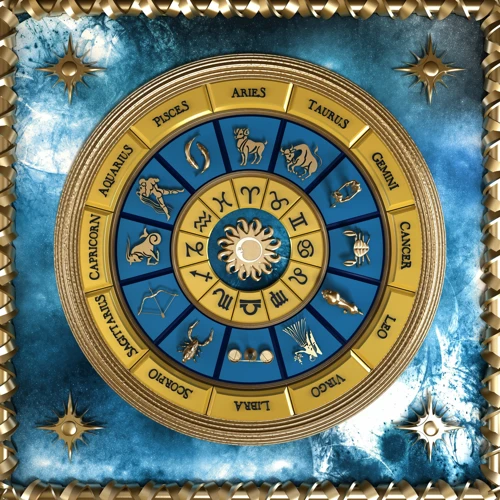
The Zodiac Wheel and astrology are intricately intertwined, with the wheel serving as a fundamental tool for interpreting astrological phenomena. Interpreting Zodiacal Positions: Astrologers analyze the position of the planets and zodiac signs at the time of an individual’s birth to gain insight into their personality traits, strengths, and challenges. Each zodiac sign carries its own unique characteristics and is associated with specific elements, modalities, and ruling planets. By mapping the zodiacal positions, astrologers can offer valuable guidance on various aspects of life, such as relationships, career paths, and personal growth. Zodiac Symbols and Meanings: The symbols of the zodiac, ranging from the bold Aries ram to the mysterious Scorpio scorpion, hold symbolic significance that contributes to the overall interpretation of an astrological birth chart. Understanding the symbolism and meanings behind these symbols adds depth and nuance to astrological interpretations. For example, the fiery nature of Aries signifies energy, passion, and leadership qualities, while the balanced scales of Libra represent justice, harmony, and diplomacy. The Zodiac Wheel acts as a navigational map that guides astrologers in unlocking the mysteries of the stars and deciphering their impact on human lives.
Interpreting Zodiacal Positions
Interpreting Zodiacal Positions is a fundamental aspect of astrology, allowing us to gain insight into various aspects of a person’s life based on the position of celestial bodies at the time of their birth. Each planet and luminary in the zodiacal wheel represents different energies and influences that shape an individual’s personality, relationships, and life path. Astrologers analyze the zodiacal positions of the Sun, Moon, planets, and important points, such as the Ascendant and Midheaven, to interpret a person’s natal chart and create a holistic picture of their unique character and destiny. The Sun sign represents one’s core essence and ego, while the Moon sign reflects emotions and inner desires. Planets like Mercury, Venus, and Mars provide insights into communication style, love life, and assertiveness. Additionally, the houses in a natal chart indicate specific areas of life where the zodiacal positions have a significant influence. By understanding the symbolism and meanings associated with each zodiacal position, astrologers can offer valuable guidance and predictions about an individual’s strengths, challenges, and potential life events. It’s important to note that interpretation of zodiacal positions requires expertise and a deep understanding of astrology, as each element of the natal chart interplays to create a rich and complex portrait of an individual’s life and personality. If you’re curious about understanding your own natal chart, consulting with a professional astrologer who can provide personalized interpretations can offer valuable insights into your unique cosmic blueprint. (Note: Reference link – /interpret-midheaven-natal-chart/)
Zodiac Symbols and Meanings
Zodiac symbols and their meanings play a significant role in astrology and the interpretation of the Zodiac Wheel. Each of the twelve zodiac signs is represented by a unique symbol, often derived from ancient mythology and cultural symbolism. Here is a breakdown of these symbols and their associated meanings:
1. Aries (The Ram): Symbolized by the ram, Aries represents leadership, courage, and enthusiasm.
2. Taurus (The Bull): The bull symbolizes strength, determination, and stubbornness, highlighting the Taurus personality traits.
3. Gemini (The Twins): Represented by the twins, Gemini signifies duality, versatility, and communication skills.
4. Cancer (The Crab): The crab symbolizes protection, emotional sensitivity, and intuition.
5. Leo (The Lion): Symbolic of strength, loyalty, and royalty, Leo represents leadership and charisma.
6. Virgo (The Virgin): Virgo is symbolized by the maiden, indicating purity, attention to detail, and practicality.
7. Libra (The Scales): Represented by the scales of justice, Libra signifies balance, harmony, and a love for fairness.
8. Scorpio (The Scorpion): The scorpion represents passion, intensity, and transformation, reflecting Scorpio’s traits.
9. Sagittarius (The Archer): Symbolic of adventure, exploration, and optimism, Sagittarius embodies a free-spirited nature.
10. Capricorn (The Goat): The goat symbolizes ambition, discipline, and hard work, reflecting the nature of Capricorn personalities.
11. Aquarius (The Water Bearer): Aquarius is represented by the water bearer, symbolizing intellectualism, innovation, and humanitarianism.
12. Pisces (The Fish): The fish represents intuition, empathy, and imagination, highlighting the traits of Pisces individuals.
These zodiac symbols and their associated meanings provide a framework for understanding the personality traits and characteristics associated with each sign. By interpreting these symbols, astrologers can provide insights into an individual’s strengths, weaknesses, and compatibility with other signs. Understanding the rich symbolism behind the zodiac symbols enhances our appreciation of astrology and the intricate connections between the stars and human life.
The Constellations of the Zodiac Wheel
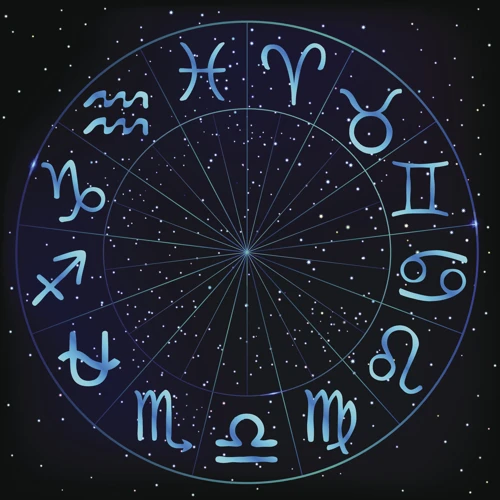
The constellations of the Zodiac Wheel hold a special place in human culture and astrology. These twelve constellations, each associated with a zodiac sign, have captivated our imaginations for centuries. Aries (The Ram): As the first sign of the zodiac, Aries symbolizes new beginnings and leadership. Taurus (The Bull): Representing strength and perseverance, Taurus is known for its stability and determination. Gemini (The Twins): Symbolizing duality and communication, Gemini is known for its adaptable and sociable nature. Cancer (The Crab): Reflecting emotional depth and nurturing qualities, Cancer represents intuition and empathy. Leo (The Lion): Symbolizing courage and creativity, Leo is associated with leadership and a zest for life. Virgo (The Virgin): Known for its analytical and practical nature, Virgo represents perfectionism and attention to detail. Libra (The Scales): Representing balance and harmony, Libra is associated with diplomacy and a love for beauty. Scorpio (The Scorpion): Symbolizing passion and intensity, Scorpio is known for its transformative nature and emotional depth. Sagittarius (The Archer): Associated with exploration and optimism, Sagittarius embodies a love for adventure and philosophical pursuits. Capricorn (The Goat): Representing ambition and practicality, Capricorn is known for its discipline and determination. Aquarius (The Water Bearer): Symbolizing innovation and humanitarianism, Aquarius represents progressive thinking and a desire for equality. Pisces (The Fish): Reflecting empathy and intuition, Pisces is associated with compassion and a connection to the spiritual realm. Each constellation on the Zodiac Wheel offers unique qualities and traits that shape the personalities of those born under their influence. To delve deeper into the compatibility of these signs, explore the concept of moon sign compatibility in astrology.
Aries (The Ram)
Aries, also known as “The Ram,” is the first sign of the zodiac wheel. People born under this sign, which spans from March 21st to April 19th, are known for their fiery and assertive nature. Astrologically, Aries is associated with the element of fire, representing passion, energy, and creativity. Individuals born under this sign are often driven, ambitious, and have a natural inclination for leadership. Symbolically, the ram represents courage, strength, and determination. Aries is ruled by the planet Mars, known as the planet of action, which amplifies their assertiveness and competitive spirit. Those born under the sign of Aries are passionate individuals who are not afraid to take risks and pursue their goals with vigor. They are natural-born leaders, always ready to take charge and blaze their own trail. The energy of Aries can be compared to the dynamic and majestic /horsehead-nebula-dark-nebulas/ in the cosmos, representing strength and power.
Taurus (The Bull)
In the realm of the Zodiac Wheel, Taurus, represented by the mighty Bull, holds a special place. Taurus Traits: Those born under this sign are known for their strength, determination, and unwavering loyalty. They possess a grounded and practical nature, making them reliable and dependable companions. The Bull Symbolism: The image of the Bull symbolizes power, fertility, and abundance. It represents the earth element, emphasizing Taurus’ connection to nature and their appreciation for the physical world. The Bull also signifies stability and resilience, reflecting the steadfastness that Taurus individuals bring to their endeavors. Personality and Characteristics: Taurus individuals are typically patient, hardworking, and possess a strong sense of material security. They are known for their love of comfort and luxury, appreciating the finer things in life. However, they can also be stubborn and possessive at times, as they value stability and resist change. Taurus Compatibility: When it comes to relationships, Taurus individuals seek partners who share their values and goals. They tend to be most compatible with other earth signs, such as Virgo and Capricorn, who value stability and practicality. Understanding the characteristics and symbolism of Taurus provides a deeper insight into this zodiac sign and its impact on individuals born under its influence.
Gemini (The Twins)
Gemini, represented by the symbol of the twins, is the third sign of the zodiac. This air sign spans from May 21 to June 20 and is associated with traits such as adaptability, curiosity, and wit. People born under the sign of Gemini are known for their duality and versatility, often displaying two contrasting personalities.
Key Traits of Gemini:
- Intellectual: Geminis have a natural inclination towards learning and intellectual pursuits. They are highly curious individuals who love exploring new ideas and engaging in stimulating conversations. Their sharp minds and quick thinking make them excellent problem solvers.
- Social and Charming: Geminis are social butterflies who easily connect with others. They possess excellent communication skills and are often the life of the party. Their charm and wit make them great conversationalists and entertainers.
- Expressive: Geminis have a way with words and are talented communicators. They excel in expressing their thoughts and emotions, whether through writing, speaking, or artistic endeavors. This makes them natural storytellers and engaging performers.
- Adaptable: Geminis are highly adaptable individuals who can navigate different situations with ease. They thrive in ever-changing environments and are quick to adjust to new circumstances. Their flexibility allows them to embrace new opportunities and adventures.
Compatibility: Geminis are most compatible with fellow air signs like Libra and Aquarius, as well as fire signs such as Aries and Leo. These combinations often bring about lively and intellectually stimulating relationships. However, Geminis may find challenges in forging connections with earth signs like Taurus or Capricorn, where differences in approach and worldview can create friction. It’s important to remember that astrology provides general insights and compatibility can vary based on individual personalities and circumstances. Whether you’re a Gemini or have a special Gemini in your life, understanding their unique characteristics can lead to better appreciation and deeper connections.
Cancer (The Crab)
Within the Zodiac Wheel, Cancer is represented by the symbol of a crab. This water sign is associated with individuals born between June 21 and July 22. People born under the sign of Cancer are known for their deep emotional sensitivity and nurturing nature. They are often compassionate, intuitive, and fiercely protective of their loved ones. Just like a crab, individuals influenced by Cancer have a hard outer shell that protects their vulnerable emotions. They are known for their loyalty and devotion to their family and close friends.
Cancer is ruled by the Moon, which further enhances their emotional nature. They are deeply in tune with their own feelings and the emotions of those around them. This sensitivity gives them a strong empathetic ability to understand and connect with others on a deep level. Cancer individuals are also highly imaginative and artistic, often utilizing their intuition and creativity to navigate through life.
People born under the sign of Cancer are also known for their sense of loyalty and dedication. They value stability and security and are willing to work hard to create a nurturing and harmonious environment for themselves and their loved ones. However, they can also be prone to mood swings and occasional bouts of introspection.
In relationships, Cancer individuals are loving and devoted partners. They seek emotional security and are deeply committed to their loved ones. However, their fear of rejection and vulnerability can sometimes make them hesitant to fully open up. Once they trust their partner, they offer unwavering support and understanding.
The Cancer zodiac sign represents individuals who embrace their emotional depth, nurturing qualities, and strong intuition. Their tender nature and loyalty make them caring and supportive friends, partners, and family members.
Leo (The Lion)
Leo, also known as “The Lion,” is one of the twelve constellations in the Zodiac Wheel. In astrology, individuals born between July 23rd and August 22nd fall under the sign of Leo. Here are some key characteristics associated with Leo:
- Ruler: Leo is ruled by the Sun, the central star of our solar system. Just like the Sun’s energy, Leos are known for their warmth, radiance, and charisma.
- Symbol: The symbol of Leo is a lion, representing strength, courage, and leadership. Leos are often seen as natural-born leaders who possess a regal and commanding presence.
- Personality Traits: Leos are known for their confidence, ambition, and enthusiasm. They are extroverted individuals who love being in the spotlight and are often the life of the party.
- Creativity: Leos are known for their creative and artistic abilities. They have a natural flair for drama and enjoy expressing themselves through various forms of art and self-expression.
- Loyalty: Leos are fiercely loyal and protective of their loved ones. They value trust and are known for their strong bonds with family and friends.
- Positive Traits: Leos are generous, optimistic, and have a zest for life. They are passionate individuals who are driven to succeed and make a lasting impact on the world around them.
- Challenges: Like any sign, Leos have their challenges. They can be prone to a bit of ego and may have a desire for constant attention and validation. Additionally, their strong personality can sometimes come across as domineering or stubborn.
Leo is a fire sign, symbolizing passion, energy, and self-expression. Those born under this sign often possess a magnetic personality and leave a lasting impression on everyone they meet.
Virgo (The Virgin)
is one of the twelve constellations in the Zodiac Wheel, and it holds a special place in astrological lore. Represented by a maiden holding a sheaf of wheat, Virgo is often associated with purity, practicality, and attention to detail. Those born under the sign of Virgo are believed to possess analytical minds, strong organizational skills, and a meticulous nature. Virgos are known for their focus on health and well-being, as well as their desire for order and efficiency in their daily lives. They are often seen as reliable, responsible, and hardworking individuals who strive for perfection in all they do. In astrology, Virgo is ruled by the planet Mercury, which is associated with communication and intellect. This further enhances Virgo’s reputation for being intelligent and articulate. People born under the sign of Virgo are thought to excel in professions that require precision, such as accounting, editing, or scientific research. Their ability to analyze situations and attention to detail make them valuable assets in the workplace. However, Virgos may also be prone to being overly critical of themselves and others, as their high standards can sometimes lead to perfectionism. Virgo is a constellation that represents practicality, hard work, and a deep sense of responsibility.
Libra (The Scales)
Libra, represented by the scales, is the seventh sign of the zodiac. It is an air sign ruled by Venus, the planet of love and beauty. People born under the sign of Libra, typically between September 23rd and October 22nd, are known for their charm, diplomacy, and sense of balance. They have a natural affinity for fairness and justice, striving for harmony in all aspects of life.
Mapping the Zodiacal Positions
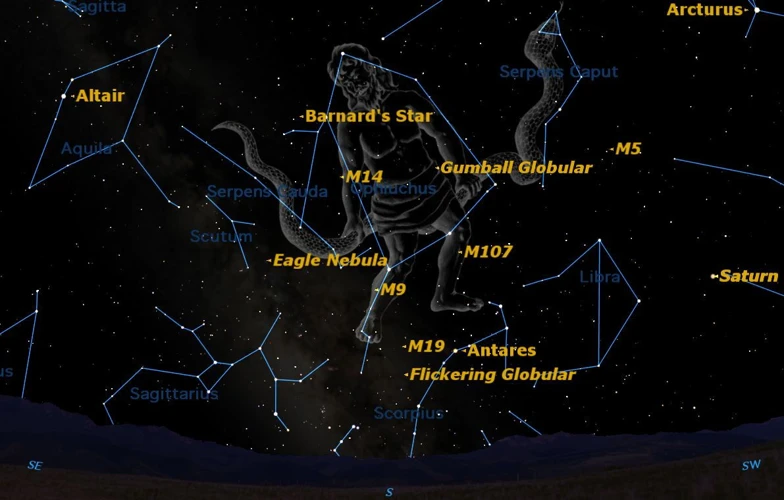
Mapping the zodiacal positions is a fascinating endeavor that allows us to understand the relationship between celestial bodies and the zodiac signs. The Ecliptic and Zodiacal Belt: The key to mapping the zodiacal positions lies in the ecliptic, which is the path the sun appears to trace across the sky throughout the year. This imaginary line is divided into twelve equal parts, corresponding to the twelve zodiac signs. This division creates the zodiacal belt that encompasses the constellations associated with each sign. Mapping Techniques throughout History: Throughout history, astronomers and astrologers have employed various techniques to map the zodiacal positions. Early civilizations relied on manual observations, tracking the movement of celestial bodies relative to the constellations. The development of astrolabes and celestial globes offered more precise mapping capabilities. Modern Tools for Mapping: Today, advanced technology such as computer software and telescopes equipped with star charts allow for accurate and detailed mapping of the zodiacal positions. Whether through ancient observation or modern technology, mapping the zodiacal positions provides a means to explore the intricate relationship between the stars, the zodiac signs, and our lives.
The Ecliptic and Zodiacal Belt
The Ecliptic and Zodiacal Belt play a crucial role in understanding the Zodiac Wheel and its celestial framework. Here are some key points to consider:
1. Definition: The Ecliptic is the apparent path that the Sun appears to follow across the sky over the course of a year. It is essentially the imaginary line formed by the Earth’s orbit around the Sun. The Zodiacal Belt, also known as the Zodiac, is a belt or band around the Ecliptic that spans approximately 18 degrees on either side.
2. Zodiac Signs: The Zodiac Belt is divided into twelve equal parts, each representing a Zodiac sign. These signs are based on the twelve constellations that fall within the Zodiac Belt. Aries, Taurus, Gemini, Cancer, Leo, Virgo, Libra, Scorpio, Sagittarius, Capricorn, Aquarius, and Pisces are the twelve Zodiac signs.
3. Zodiacal Positions: The Ecliptic and the Zodiac Belt provide a reference point for determining the Zodiacal position of celestial bodies, such as planets and the Moon. Astrologers use the positions of these celestial bodies in relation to the Zodiac signs to interpret astrological charts and make predictions.
4. Precession: The Ecliptic and Zodiacal Belt are not fixed in the sky but undergo a slow westward shift over time due to a phenomenon called precession. This means that the positions of the constellations in relation to the Zodiac signs gradually change. For example, the constellation associated with the Aries sign today is not the same as it was thousands of years ago.
Understanding the significance of the Ecliptic and Zodiacal Belt is essential for comprehending the interpretation of Zodiac signs and the mapping of celestial bodies within the Zodiac Wheel. It provides a framework for astrologers to analyze and interpret various aspects of a person’s life based on their Zodiac sign and the positioning of celestial bodies at the time of their birth.
Mapping Techniques throughout History
Throughout history, astronomers and scholars have developed various mapping techniques to accurately depict the zodiacal positions on the celestial sphere. These techniques have evolved over time, driven by advancements in technology and a deeper understanding of celestial phenomena. Here are some notable mapping techniques used throughout history:
1. Armillary Sphere: One of the earliest mapping tools, the armillary sphere, was used by ancient astronomers to visualize the celestial sphere. Consisting of a series of rings representing the celestial equator, ecliptic, and other key reference points, the armillary sphere provided a tangible representation of the zodiacal positions.
2. Star Charts: In the Middle Ages, star charts became popular mapping tools. These charts depicted the positions of stars and constellations in relation to the zodiac. They were often hand-drawn and included detailed illustrations and labels, making them valuable references for astronomers and navigators.
3. Ephemerides: With the advent of printing presses in the 15th century, ephemerides became widely used for mapping zodiacal positions. These reference books contained tables of celestial coordinates, allowing astronomers to calculate the positions of planets, stars, and other celestial objects accurately.
4. Astrolabes: Astrolabes were intricate instruments used for both mapping the zodiacal positions and performing astrological calculations. By adjusting various components, such as the altitude and azimuth rings, users could align the astrolabe with specific zodiacal positions and accurately measure celestial coordinates.
5. Modern Digital Software: In the present-day, advanced computer software and digital tools have revolutionized the mapping of zodiacal positions. Programs like Stellarium and Celestia allow users to simulate the night sky, precisely displaying the positions of constellations and zodiac signs at any given time and location.
The evolution of mapping techniques throughout history has greatly contributed to our understanding of the zodiacal positions and their significance in astrology. These techniques have provided astronomers, scholars, and enthusiasts with the tools necessary to explore the heavens and unlock the mysteries of the celestial realm.
Modern Tools for Mapping
Modern Tools for Mapping the Zodiac Wheel have revolutionized the way we study and interpret celestial phenomena. These advanced technologies enable us to explore the night sky with unprecedented accuracy and detail. Here are some of the key modern tools used for mapping the Zodiac Wheel:
1. Astrolabes: Originally developed in Ancient Greece, astrolabes are mechanical devices used to calculate the positions of celestial bodies. They were widely used for astronomical measurements and mapping the zodiacal positions.
2. Telescopes: With the invention of telescopes, astronomers gained the ability to observe distant celestial objects and map the intricate details of the zodiac constellations. Modern telescopes equipped with high-resolution cameras allow for precise observations and detailed measurements.
3. Planetarium Software: Computer-generated planetarium software has given us the power to simulate the night sky and map the zodiacal positions with ease. These programs enable us to view the sky from any location on Earth and at different points in time, making it an invaluable tool for both amateur and professional astronomers.
4. Satellites: Satellites equipped with advanced imaging technology have revolutionized our understanding of the zodiac constellations. These satellites capture high-resolution images of the night sky, providing detailed maps and data for further analysis.
5. Big Data and AI: The abundance of astronomical data collected over the years has led to the development of advanced analytics tools powered by Artificial Intelligence. These tools can process vast amounts of data, identify patterns, and make predictions, helping astronomers map and interpret the zodiacal positions more accurately.
The advent of these modern tools has made mapping the Zodiac Wheel more precise and accessible, allowing us to unravel the mysteries of the cosmos with unprecedented clarity.
The Zodiac Wheel Today
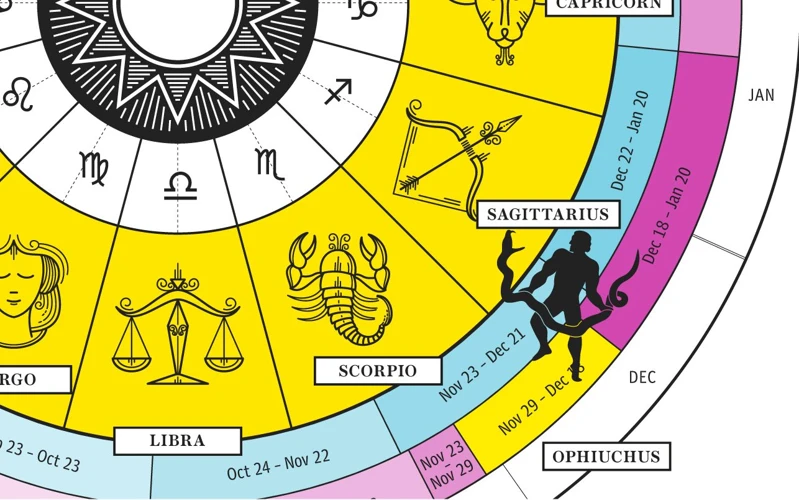
In the present day, the Zodiac Wheel continues to play a significant role in many people’s lives. Contemporary Use: Astrology enthusiasts and believers regularly consult the Zodiac Wheel to understand their personality traits and predict future events. The twelve zodiac signs, represented by constellations, are believed to influence various aspects of an individual’s life, including relationships, career choices, and personal growth. Many individuals identify strongly with their zodiac sign and find comfort and guidance in the interpretations of their zodiacal positions. Zodiac Sign Compatibility: Another popular application of the Zodiac Wheel is exploring compatibility between different signs. By examining the interactions and elements associated with each zodiac sign, individuals can gain insights into their compatibility with others, potentially guiding their search for compatible relationships or partnerships. Whether viewed as a fun curiosity or a guiding force, the Zodiac Wheel continues to captivate and intrigue people all over the world.
Contemporary Use
Contemporary use of the Zodiac Wheel encompasses a wide range of applications and beliefs. Here are some intriguing aspects of how the Zodiac Wheel is utilized in modern times:
1. Astrology: Astrologers continue to interpret the Zodiac Wheel to provide insights into an individual’s personality traits, compatibility with others, and potential future events. By analyzing the zodiacal positions at the time of a person’s birth, astrologers create detailed birth charts or horoscopes, which serve as a guide for navigating life’s challenges and opportunities.
2. Personal Growth and Self-Reflection: Many people turn to the Zodiac Wheel as a tool for self-reflection and personal growth. Exploring the characteristics associated with their zodiac sign can help individuals gain a better understanding of themselves and their inherent strengths and weaknesses. It offers a framework for personal development and empowers individuals to harness their potential.
3. Popular Culture: The symbolism and allure of the Zodiac Wheel have permeated popular culture. From fashion to art, literature to movies, references to zodiac signs and astrology can be found everywhere. Many individuals proudly display their zodiac sign through clothing, accessories, or even tattoos, celebrating their connection to the cosmic energies represented by the Zodiac Wheel.
4. Zodiac Sign Compatibility: The compatibility of zodiac signs remains a topic of interest in contemporary relationship dynamics. Some people consult the Zodiac Wheel to gauge compatibility with their partners, friends, or colleagues. While it is important to approach such compatibility analyses with openness and understanding, it can provide insights into potential areas of harmony or potential challenges in relationships.
5. Guidance for Daily Living: For some, consulting daily horoscopes based on their zodiac sign is a fun and lighthearted way to seek guidance and inspiration for the day ahead. These horoscopes often provide a general forecast of what to expect in terms of love, career, health, and other aspects of life.
While not everyone may fully embrace the Zodiac Wheel and astrology, its contemporary use continues to captivate and influence many individuals seeking self-discovery, connection, and guidance in their lives.
Zodiac Sign Compatibility
When it comes to relationships, many people turn to astrology to gain insights into compatibility between zodiac signs. While it’s important to remember that compatibility is not solely determined by someone’s zodiac sign, understanding the general dynamics between different signs can provide valuable guidance. Each zodiac sign possesses unique traits and characteristics that influence how they relate to others. Some signs naturally complement each other, creating harmonious and supportive partnerships. For example, the fiery Aries and the adventurous Sagittarius are both enthusiastic and active signs, making them an exciting match. On the other hand, signs that are opposite in nature can also attract each other due to the different qualities they bring into a relationship. The balanced and diplomatic Libra, for example, can find a strong connection with the assertive and passionate Aries. However, certain combinations may present compatibility challenges, requiring effort, understanding, and compromise from both parties. For instance, the practical and grounded Taurus may clash with the independent and impulsive nature of the Aries. Exploring zodiac sign compatibility can be a fun and insightful way to gain a deeper understanding of potential relationships. It’s important to keep in mind that true compatibility goes beyond zodiac signs and relies on factors such as personal values, communication styles, and shared goals.
The Ophiuchus Enigma
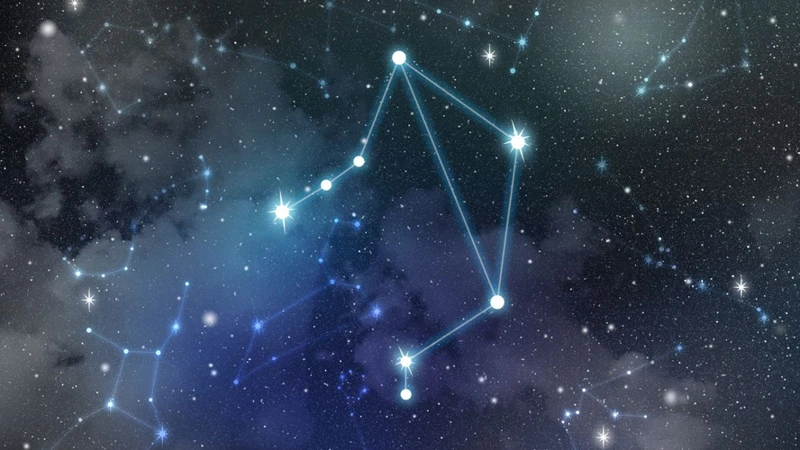
The Ophiuchus Enigma adds a captivating twist to the traditional Zodiac Wheel. The Ophiuchus Constellation: Ophiuchus, also known as the Serpent Bearer, is an ancient constellation located along the celestial equator. Despite being omitted from the traditional zodiac, Ophiuchus has a rich mythological background and its own unique set of attributes. The constellation depicts a figure holding a serpent, representing healing and wisdom. Controversy and Impact on Zodiac Wheel: In recent years, there has been a debate surrounding the inclusion of Ophiuchus as a thirteenth zodiac sign. Some argue that its addition would require a major shift in astrological readings and personality interpretations. Others believe that Ophiuchus should be acknowledged as a significant celestial entity, offering an alternative perspective to traditional astrology. The Ophiuchus Enigma continues to intrigue both astrologers and enthusiasts alike, raising questions about the boundaries and possibilities of the Zodiac Wheel.
The Ophiuchus Constellation
The Ophiuchus constellation, also known as “The Serpent Bearer,” is a fascinating and enigmatic addition to the Zodiac Wheel. This constellation lies along the celestial equator and is depicted as a man holding a serpent. In Greek mythology, Ophiuchus represents the healer Asclepius, who possessed great knowledge in the art of medicine. However, despite its prominence and significance, the Ophiuchus constellation is not officially recognized as one of the twelve zodiac signs. Nonetheless, it has gained attention and sparked debates in recent years. Some astrologers argue that the inclusion of Ophiuchus would shift the dates and characteristics associated with the other zodiac signs. Proponents of Ophiuchus believe it represents those born between November 29 and December 17, challenging the traditional boundaries of the zodiac. While the Ophiuchus constellation may not be officially part of the zodiac, its mystique and allure continue to captivate stargazers and astrologers alike.
Controversy and Impact on Zodiac Wheel
Controversy and Impact on the Zodiac Wheel: The Zodiac Wheel has faced its fair share of controversy and debate over the years. One significant controversy revolves around the inclusion of the thirteenth constellation, Ophiuchus, which is often referred to as the “13th zodiac sign.” This controversy stems from the fact that the dates associated with the zodiac signs were established thousands of years ago and do not align with the current astronomical positions of the constellations. As a result, some astrologers argue that the Zodiac Wheel needs to be updated to account for these shifts. The introduction of Ophiuchus would disrupt the traditional twelve-sign system, leading to a reconfiguration of dates and personality traits associated with each sign. This controversy has sparked discussions about the validity and accuracy of astrology, with some questioning the entire foundation on which the Zodiac Wheel is built. Despite the controversy, the impact of Ophiuchus on the Zodiac Wheel cannot be ignored. It has prompted individuals to question their astrological identities and explore new perspectives on their personalities and life paths. Whether Ophiuchus will eventually find its place within the Zodiac Wheel or remain a point of debate, its inclusion has undoubtedly made an impact and added a layer of complexity to the traditional zodiac system.
Conclusion

In conclusion, the Zodiac Wheel is a remarkable testament to our enduring fascination with the stars and our desire to understand the mysteries of the cosmos. From its ancient origins to its modern-day interpretations, the Zodiac Wheel has played a significant role in shaping our understanding of celestial phenomena and its connection to human life. Throughout history, people have turned to the zodiacal positions and their symbolic meanings to gain insights into their personalities, relationships, and destinies. Today, the Zodiac Wheel continues to be widely embraced, with horoscopes and astrological readings offering guidance and entertainment to millions. However, it’s important to approach astrology with a discerning mind and remember that it should be taken with a grain of salt. While the Zodiac Wheel offers intriguing insights, it is ultimately up to individuals to navigate their own paths and make their own choices. Whether you see astrology as a guiding light or simply enjoy the cultural significance of the zodiac signs, the Zodiac Wheel will always occupy a prominent place in our exploration of the universe and our quest for self-discovery.
Frequently Asked Questions

What is the significance of the Zodiac Wheel?
The Zodiac Wheel holds great significance as a tool for understanding celestial phenomena and interpreting astrological influences on human lives. It helps map the positions of constellations along the ecliptic and offers insights into personality traits and life events associated with each zodiac sign.
How old is the concept of the Zodiac Wheel?
The concept of the Zodiac Wheel is ancient, with its origins dating back thousands of years. It first emerged in civilizations such as Mesopotamia and Egypt and has since evolved and been influenced by various cultures throughout history.
What do the zodiac symbols represent?
The zodiac symbols represent the twelve constellations along the ecliptic and are representative of both mythological figures and animals. These symbols provide a visual representation of the zodiac signs and their associated qualities and characteristics.
Can the Zodiac Wheel be used for predicting the future?
The Zodiac Wheel and astrology are often used as tools for gaining insight into potential life events and personality traits, but they are not meant to predict the future with absolute certainty. They serve as guides and sources of self-reflection rather than fortune-telling tools.
How are zodiacal positions interpreted in astrology?
In astrology, zodiacal positions are interpreted by examining the position of celestial bodies, such as the sun, moon, and planets, within a specific zodiac sign. This information helps astrologers assess various aspects of a person’s life, including personality traits, relationships, and career paths.
What are some mapping techniques used throughout history?
Throughout history, different mapping techniques were used to track the positions of constellations along the Zodiac Wheel. Some early methods involved using star charts and landmarks to identify the positions of constellations, while more modern techniques utilize sophisticated tools like telescopes and computer software.
What tools are used for mapping the Zodiac Wheel today?
Today, astronomers and astrologers use advanced tools like telescopes, planetarium software, and computer algorithms to map and track the Zodiac Wheel. These tools assist in accurately calculating zodiacal positions and studying celestial phenomena in real-time.
What does the Ophiuchus constellation represent?
The Ophiuchus constellation, also known as the Serpent Bearer, is associated with healing and wisdom. In astrology, it is considered the “13th sign” and represents those born between November 29 and December 17. However, it is important to note that not all astrologers recognize Ophiuchus as a zodiac sign.
How has the introduction of Ophiuchus impacted the Zodiac Wheel?
The introduction of Ophiuchus as a potential zodiac sign has stirred controversy within the astrological community. While some believe it should be integrated into the Zodiac Wheel, others argue that the traditional twelve signs should be maintained. As of now, there is no consensus, and Ophiuchus remains a subject of debate.
What is zodiac sign compatibility?
Zodiac sign compatibility refers to the assessment of how well two individuals’ zodiac signs align with each other. Though it is not a definitive measure of relationship compatibility, it provides insights into potential areas of harmony and conflict based on the astrological attributes associated with each sign.
References
Frequently Asked Questions

What is the significance of the Zodiac Wheel?
The Zodiac Wheel is an important tool used in astrology to map the positions of the constellations in relation to the Earth. It helps astrologers interpret personality traits, predict future events, and understand the cosmic influences on human lives.
How did the Zodiac Wheel come into existence?
The Zodiac Wheel has ancient origins, dating back to civilizations such as the Mesopotamians and Ancient Egyptians. These early cultures observed the regular patterns of constellations in the night sky and recognized the significance of their positions.
How has the Zodiac Wheel evolved over time?
Throughout history, the Zodiac Wheel has undergone various changes and adaptations. Different cultures have added their own constellations and modified the interpretations and meanings associated with each zodiac sign.
What do the zodiac symbols represent?
Each zodiac symbol represents a unique personality archetype. For example, Aries symbolizes courage and leadership, while Taurus represents strength and reliability. These symbols provide astrologers with a framework for understanding human behavior and character traits.
How do astrologers interpret zodiacal positions?
Astrologers analyze the zodiacal positions of the planets at the time of a person’s birth to determine their personality traits, potential life events, and compatibility with others. These interpretations are based on a combination of ancient wisdom and modern astrological principles.
What techniques were used to map the Zodiac Wheel throughout history?
In ancient times, astronomers relied on observational methods to map the Zodiac Wheel. They observed the positions of stars and planets using naked eye observations and created maps based on these observations. Later, more advanced tools like astrolabes and telescopes were used.
What tools are used today for mapping Zodiacal positions?
In the modern era, powerful software programs and computer algorithms are used to accurately map the position of constellations and planets in the Zodiac Wheel. These tools can calculate precise positions and provide astrologers with detailed information for their interpretations.
How is the Zodiac Wheel used in contemporary society?
Today, many people consult their zodiac signs for guidance, entertainment, and self-discovery. Horoscopes and astrology have become popular topics in media, and many individuals use their zodiac sign as a way to understand themselves and navigate their lives.
What is the controversy surrounding the Ophiuchus constellation?
The Ophiuchus constellation is not traditionally included in the Zodiac Wheel, but some astrologers argue that it should be. This has sparked controversy and discussions about the validity and relevance of the Zodiac Wheel in modern astrology.
What impact does the Ophiuchus controversy have on the Zodiac Wheel?
The controversy surrounding the Ophiuchus constellation has led to debates about whether the Zodiac Wheel should be updated to include this additional zodiac sign. Some believe that incorporating Ophiuchus would provide a more accurate representation of celestial alignments, while others argue that it would disrupt the existing astrological system.







